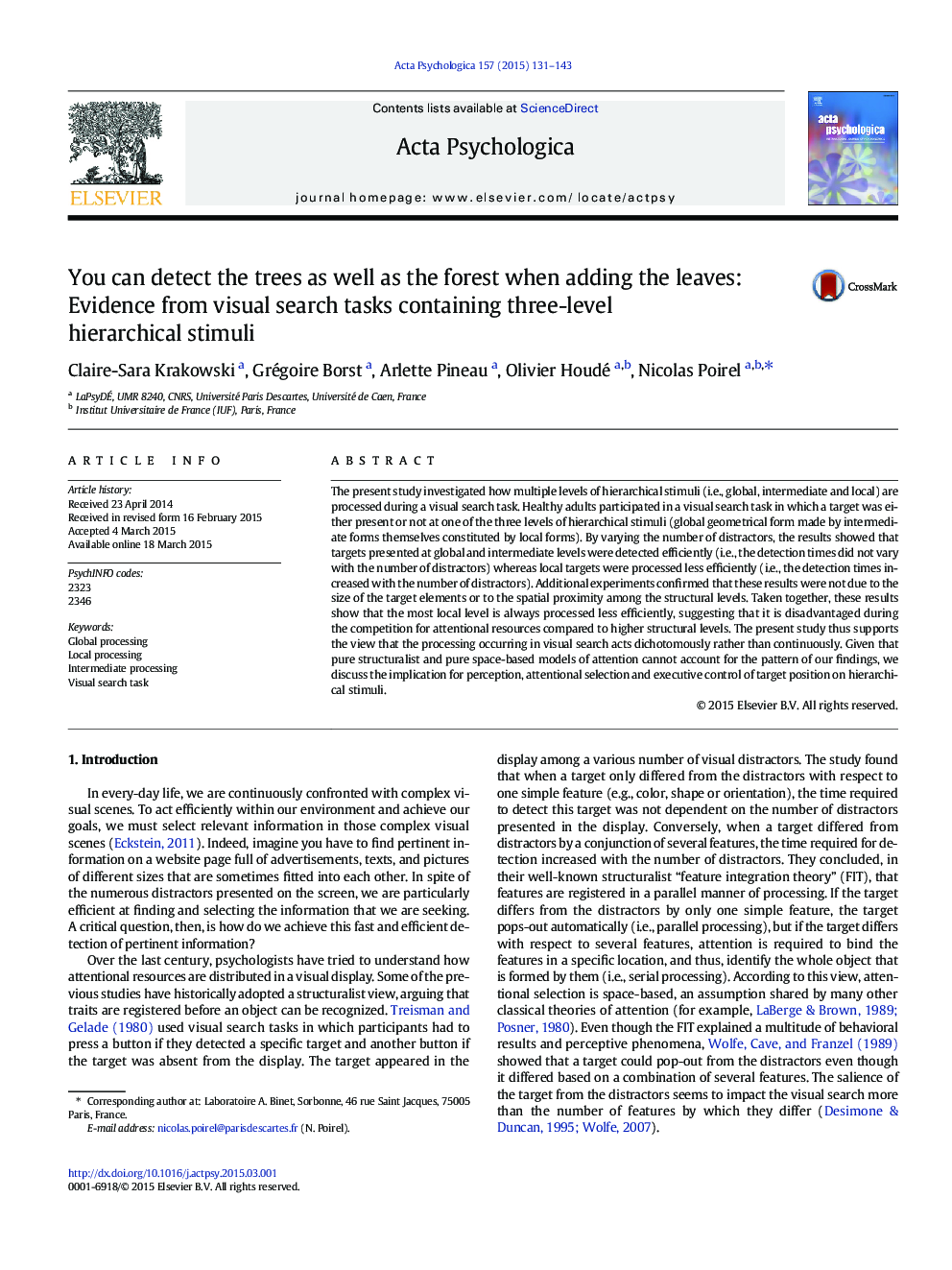| Article ID | Journal | Published Year | Pages | File Type |
|---|---|---|---|---|
| 7277375 | Acta Psychologica | 2015 | 13 Pages |
Abstract
The present study investigated how multiple levels of hierarchical stimuli (i.e., global, intermediate and local) are processed during a visual search task. Healthy adults participated in a visual search task in which a target was either present or not at one of the three levels of hierarchical stimuli (global geometrical form made by intermediate forms themselves constituted by local forms). By varying the number of distractors, the results showed that targets presented at global and intermediate levels were detected efficiently (i.e., the detection times did not vary with the number of distractors) whereas local targets were processed less efficiently (i.e., the detection times increased with the number of distractors). Additional experiments confirmed that these results were not due to the size of the target elements or to the spatial proximity among the structural levels. Taken together, these results show that the most local level is always processed less efficiently, suggesting that it is disadvantaged during the competition for attentional resources compared to higher structural levels. The present study thus supports the view that the processing occurring in visual search acts dichotomously rather than continuously. Given that pure structuralist and pure space-based models of attention cannot account for the pattern of our findings, we discuss the implication for perception, attentional selection and executive control of target position on hierarchical stimuli.
Related Topics
Life Sciences
Neuroscience
Cognitive Neuroscience
Authors
Claire-Sara Krakowski, Grégoire Borst, Arlette Pineau, Olivier Houdé, Nicolas Poirel,
